LORIN ROCHE, Ph.D.
- Drifted slowly awake and lain there in a delicious restfulness for a few moments before opening your eyes?
- Looked at the night sky and felt utter wonder at the vastness?
- Merged so deeply with the melody and rhythm of music you love that your sense of self disappeared in the ocean of sound?
- Felt electricity coursing through your body when you made love? At the moment of orgasm, been filled with brilliance or fireworks? Or in the afterglow, felt your body shimmering and pulsing with a vibrant peace?
- Inhaled a smell so delicious, perhaps your favorite dish when you were really hungry, that you almost swooned?
- Sat by a river, conscious of its steady flow, and entered into a sense of stillness?
- Been so in love that your heart seemed to turn to light?
Then you have already experienced meditative awareness. These are all spontaneous experiences, typically lasting from a few seconds to a few minutes. Attention expands beyond its confines and touches something greater, something of the essence of life. Human beings have been experiencing these sorts of things since before there was the language to speak of them.
Meditative experience is no different from these naturally occurring moments. It is just intentional. What I am calling a meditation technique is paying attention to the rhythm of such an experience, tracking it through all its phases, and returning again and again to be educated by it. Most of what is meant by practicing meditation is just spending time being in the presence of such a quality of attention, then enjoying the effect on your daily life. Meditation is the practice of developing your capacity for rich experience.
Each of us is a yogi for half a second when we stop to smell the roses. It's all there in that moment of conscious, grateful breathing. When we cultivate our gratitude for breath, something good happens at a deep level. We make friends with life.

Something has led you to be interested in meditationyour curiosity, your desire to explore, a longing for a little rest and relaxation, or the recommendation of a friend or doctor. Well, come on in.
Meditation is a great gift to give yourself. It is a way to experience a higher quality of life just by going inside yourself and touching your center for a moment. It is a brief retreat from the world that lets you reenter the world with a more vivid presence.
If you have never meditated before, this book will be your guide to some of the simplest and most widely practiced meditations in the Western world. They are all simple techniques you can do on your own; they involve things like paying attention to your breathing, listening to quiet sounds, and tracking the movement of your thoughts. You can start by doing the exercises for one or two minutes at a time, and as you grow more skillful you can meditate longer.
If you have meditated before, you probably started and stopped a number of times, looking for ways of practicing that suited your individual nature and lifestyle. You may have learned a technique from a friend, a teacher, or a class that did not suit you. Perhaps it was like a shoe that doesn't quite fitokay to try on in the store but uncomfortable to walk in. My approach is about taking what usually seem like obstacles to meditationyour busy mind, your long days, your desiresand making them into your allies.
You will find the exercises in this book useful for getting started again and for learning how to customize your meditation to your needs. You also may find that the exercises help your meditation become easier, more restful, and more interesting.
This is come-as-you-are meditation. You do not have to be other than you are to begin. There are no impossible-to-do techniques, no uncomfortable postures, no onerous rules to follow.
If you invest the time in exploring how your individual nature interacts with these techniques, you will likely develop some powerful tools to enhance your life. The work for you is to engage your curiosity and sense of adventure. The rewards are a greater ability to pay attention to life and to love.
Almost everything we think of as meditation is flavored slightly with the view from behind the monastery walls. The ideas that in meditation you are supposed to sit still and make your mind empty, aspire to high spiritual ideals, override or kill the ego , and cultivate detachment from thingsall these come from the spiritual tradition for recluses. They may be wisdom if you are a monastic, but they are poison if you live in the world. These are not general truths any more than the rules for Ping-Pong are universal, applying to tennis, golf, volleyball, baseball, and every other sport.
Meditation is about being intimate with your deepest self. Any sense of formality, any sense that you are doing a technique that comes from outside yourself interferes with this necessary closeness.
Meditation can and should be something that you reach for as informally as you reach for a cup of tea, or an apple, or the phone to talk to a friendin other words, as a direct response to sensing some need in your body or heart. Meditation can be something you look forward to after you roll out of bed in the morning, to help you wake up and get ready for the day. It is something you may find yourself wanting to do when you walk in the door after work, to unwind and revitalize yourself. It is not really that meditation is better than sitting on the sofa and having a glass of wine while listening to music on the stereo. Meditation is just as much fun, but it provides more relief, works better, and is cheaper. Taking this informal approach to being with yourself will help you keep meditation simple, a simple pleasure and a relief.
Approaching meditation as a pleasurable indulgence will help you develop good instincts for your path, because instinctive guidance comes from the same place as your cravings and desires. You will need to be in touch with your instincts because you are your own guide in meditation, with your own daily life as your feedback mechanism.
Your instincts do not necessarily feel spiritual. Far from itthey feel down-home, selfish, and spontaneous. The instincts are seat-of-the-pants and gut feelings. And they are often the first thing that gets thrown overboard when people try to be spiritual. But they are the essence of spirituality. They represent deep wisdom. The instincts move us to explore the world, survive, thrive, communicate, bond, reproduce, and rejoice. The urge to explore meditation is just as instinctive as the urges to talk to other people, work to assure your survival, explore your sexuality, and party. Spirituality is a spontaneous alchemy that occurs when all the instincts are working together. This happens only when all of human nature is embraced.
Meditation is not one monotone mood of reverence, nor is it only irreverence. It is a wide-open embrace of every possible mood, emotion, and current of your being: that is its simplicity and its challenge. Therefore I advocate a radical informality with the self as the essence of the approach to meditation. In an informal approach, the rebel in you is just as important as the sincere seeker. The impulse that says Uh, I don't want to meditate today is just as useful and informative as the impulse that says I really want and need to meditate. I have an important day .

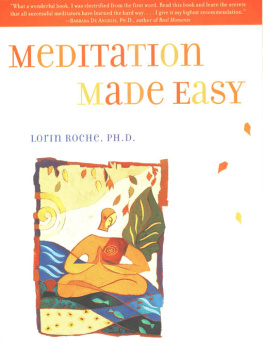
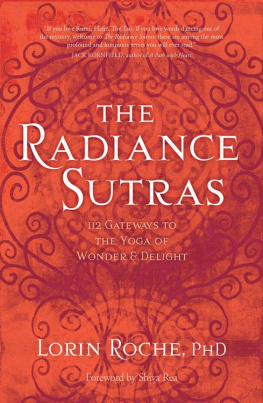
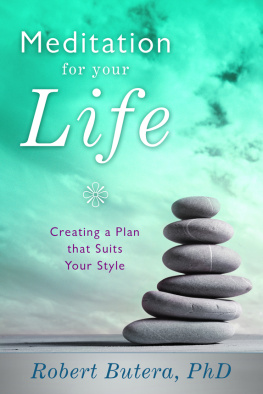
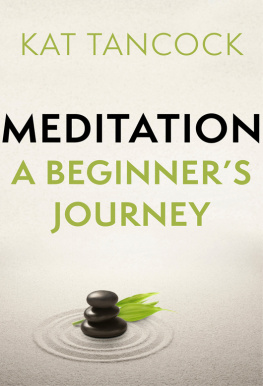


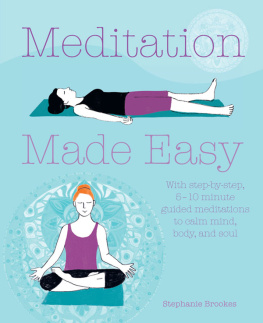

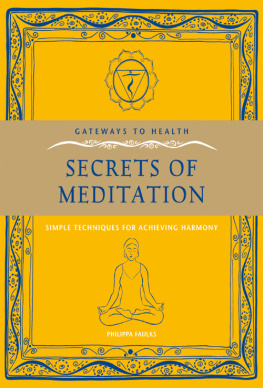
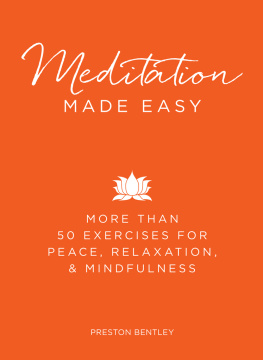
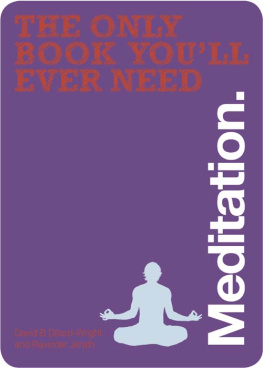

 Made Easy
Made Easy

